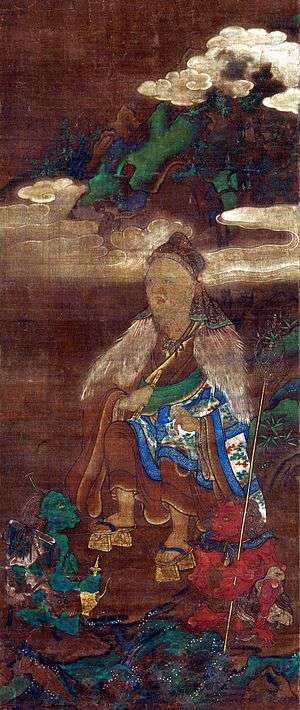699
Year 699 (DCXCIX) was a common year starting on Wednesday (link will display the full calendar) of the Julian calendar. The denomination 699 for this year has been used since the early medieval period, when the Anno Domini calendar era became the prevalent method in Europe for naming years.
| Millennium: | 1st millennium |
|---|---|
| Centuries: | |
| Decades: | |
| Years: |
|
| 699 by topic |
|---|
| Leaders |
| Categories |
|
| Gregorian calendar | 699 DCXCIX |
| Ab urbe condita | 1452 |
| Armenian calendar | 148 ԹՎ ՃԽԸ |
| Assyrian calendar | 5449 |
| Balinese saka calendar | 620–621 |
| Bengali calendar | 106 |
| Berber calendar | 1649 |
| Buddhist calendar | 1243 |
| Burmese calendar | 61 |
| Byzantine calendar | 6207–6208 |
| Chinese calendar | 戊戌年 (Earth Dog) 3395 or 3335 — to — 己亥年 (Earth Pig) 3396 or 3336 |
| Coptic calendar | 415–416 |
| Discordian calendar | 1865 |
| Ethiopian calendar | 691–692 |
| Hebrew calendar | 4459–4460 |
| Hindu calendars | |
| - Vikram Samvat | 755–756 |
| - Shaka Samvat | 620–621 |
| - Kali Yuga | 3799–3800 |
| Holocene calendar | 10699 |
| Iranian calendar | 77–78 |
| Islamic calendar | 79–80 |
| Japanese calendar | N/A |
| Javanese calendar | 591–592 |
| Julian calendar | 699 DCXCIX |
| Korean calendar | 3032 |
| Minguo calendar | 1213 before ROC 民前1213年 |
| Nanakshahi calendar | −769 |
| Seleucid era | 1010/1011 AG |
| Thai solar calendar | 1241–1242 |
| Tibetan calendar | 阳土狗年 (male Earth-Dog) 825 or 444 or −328 — to — 阴土猪年 (female Earth-Pig) 826 or 445 or −327 |

En no Ozunu (c. 634–c.700)
Events
By place
Umayyad Caliphate
- Umayyad troops invade Armenia, and secure the submission of Prince Smbat VI Bagratuni. The South Caucasus becomes a viceroyalty called al-Arminiya, and is divided into four regions: Caucasian Albania, Caucasian Iberia, the area around the Aras River, and Taron (modern Turkey).[1][2]
Asia
- June 26 – En no Ozunu, Japanese ascetic, is banished to Izu Ōshima (a volcanic island in the Izu Islands), and accused of confusing the mind of the people with magic. He will be later regarded as the founder of a folk religion called Shugendō.
Deaths
- Niitabe, Japanese princess
- Ōe, Japanese princess
- Seaxburh of Ely, queen of Kent
- Werburgh, Anglo-Saxon princess
- Yuge, Japanese prince
gollark: There are fancier and possibly more accurate ways to explain this but I can't currently be bothered.
gollark: `x mod y` is just the remainder when `x` is divided by `y`.
gollark: While you're here, consider some x where x^2 mod 384 = 8.3. Continue considering it. This is NOT to distract you.
gollark: So they should line up.
gollark: "Bad" inasmuch as you were seemingly saying that "balanced" outcomes were always the "good" ones earlier.
References
- Venning, Timothy, ed. (2006). A Chronology of the Byzantine Empire. Palgrave Macmillan. p. 188. ISBN 1-4039-1774-4.
- Treadgold, Warren (1997). A History of the Byzantine State and Society. Stanford, California: Stanford University Press. p. 339. ISBN 0-8047-2630-2.
This article is issued from Wikipedia. The text is licensed under Creative Commons - Attribution - Sharealike. Additional terms may apply for the media files.